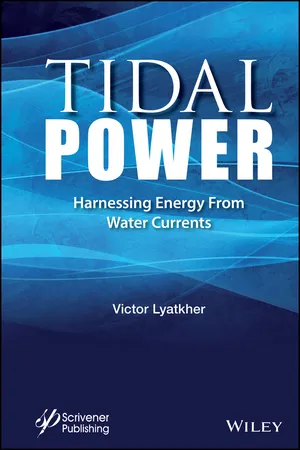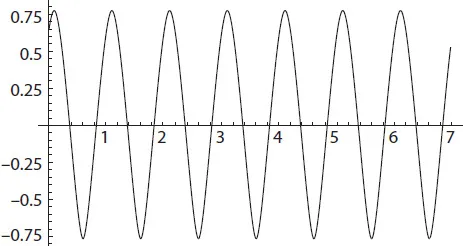
- English
- ePUB (mobile friendly)
- Available on iOS & Android
About this book
Offers a unique and highly technical approach to tidal power and how it can be harnessed efficiently and cost-effectively, with less impact on the environment than traditional power plants
With the demand for energy outstripping conventional sources from fossil fuels, new sources of energy must be found. Tidal power is a potentially rich source of renewable energy. Even though power plants that run on hydropower have been around a long time, new types, such as those run without dams, have not been as heavily researched and presented to the scientific community. This book is a step in that direction—suggesting more cost-effective and less environmentally intrusive methods for creating power sources from rivers, the tides, and other sources of water.
Presenting a detailed discussion of the costs, risks, and challenges of building power plants that run on hydropower, Tidal Power: Harnessing Energy From Water Currents:
- Covers the technical aspects of tidal power plants without dams, or "Marine Hydro Kinetic (MHK)" power plants
- Covers tidal barrages with reservoirs and how they can be utilized to generate renewable energy
- Details the regulations of hydro power plants that do not use dams
- Gives real examples of turbines that have been built using these new technologies
As the global supply of conventional energy sources, such as fossil fuels, dwindles and becomes more and more expensive, unconventional and renewable sources of energy, such as power generation from water sources, becomes more important—making Tidal Power an incredibly valuable text for engineers, students, and researchers working in the field.
Frequently asked questions
- Essential is ideal for learners and professionals who enjoy exploring a wide range of subjects. Access the Essential Library with 800,000+ trusted titles and best-sellers across business, personal growth, and the humanities. Includes unlimited reading time and Standard Read Aloud voice.
- Complete: Perfect for advanced learners and researchers needing full, unrestricted access. Unlock 1.4M+ books across hundreds of subjects, including academic and specialized titles. The Complete Plan also includes advanced features like Premium Read Aloud and Research Assistant.
Please note we cannot support devices running on iOS 13 and Android 7 or earlier. Learn more about using the app.
Information
Chapter 1
Marine Hydro Kinetic- MHK
- All projects require the building of dams and other hydro-technical construction, which cut off the TPP basin from the sea. The existence of this kind of front noticeably changes the ecological situation in the basin.
- The existence of a head front (dams and head construction) defines an often unfavorable system of finance where it is necessary to completely finish the building (and completely pay for all required work) and only after will the station begin to generate energy and return capital investments.
- The heads at TPP are not large, the traditional hydropower equipment is expensive, and production is relatively small. The cost of TPP building and head front constructions designed for gale oceanic wave and heavy ice load is high. This establishes high capital investments per unit of the installed capacity and a relatively high primary cost of energy.
- The power of TPP is changed in accordance with the tidal water regime with may be at zero many times per day.






















Table of contents
- Cover
- Half Title page
- Title page
- Copyright page
- Preface
- Chapter 1: Marine Hydro Kinetic- MHK
- Chapter 2: Rivers (Channels) Power Plants without a Dam
- Chapter 3: Low-Speed Hydro-Kinetic Turbines
- Chapter 4: Large Power Hydro Turbines
- Chapter 5: Examples of Turbines Produced
- Chapter 6: Water Current Power-Looking to the Future
- Subject Index